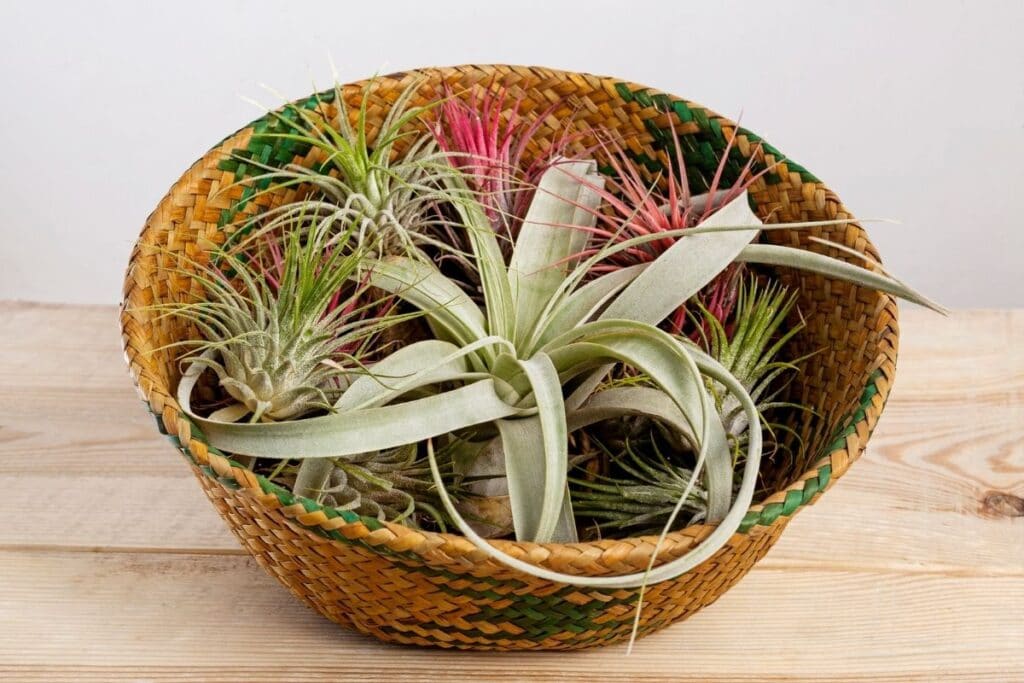Air plants of the Tillandsia genus are such unusual plants that we tend to think they don’t need what all plants require: light, water, nutrients, and air. Unfortunately, the only plants that do not need any light are the type that is made out of plastic.
Read this short guide to learn more about the light requirements of air plants.
How Much Light Do Air Plants Need?
There are over 600 different species of Tillandsia from different habitats in North and South America. Sunlight requirements do vary from species to species, but as a general rule, most air plant varieties need bright indirect light.
This could be any brightly lit area where the rays of the sun cannot reach the plant directly. A position near a window is ideal for this.
Many species will burn and scorch under harsh light, while some Tillandsias do well with plenty of direct sunlight. Generally, the very hairy, silvery species do better with more light, while greener, smoother species will thrive in lower light.
Air Plant Placement
In the northern hemisphere, the sun is usually well to the south of you. That means a position near an uncovered south-facing window will probably provide too much direct sunlight for your air plant. If you set up a sheer curtain ahead of a south-facing window, however, the filtered indirect light could be just right.
Conversely, a window on the north side of your home will not allow any direct light, and might actually be too dark for growing a Tillandsia. East or west-facing windows are often the best options.
Watch your plant for clues. Too much light can result in yellowing leaves and brown tips, while a lack of light tends to leave plants looking dry and unhealthy.
How Long Will An Air Plant Survive Without Light?
Air plants are hardy life-forms and they will easily survive for days or even weeks without the sunlight they prefer. If you really want to place your plants in a dark spot temporarily, (for an event or dinner party for example) they will survive just fine.
Remember, temporary placement in a dark spot is fine, but you can expect your plant to die if you keep it in a dark environment for most of its life. Avoid shocking your houseplant by moving it into strong, direct sunlight and heat. This will damage the plant much faster than moving it into a darker area.
Growing Air Plants Under Artificial Light
You still have options if you really want to grow air plants, but don’t have a bright and sunny spot in your home. Tillandsias do just fine under artificial grow lights too.
Of course, not just any light source will do. Look for a fluorescent lamp or LED light that is designed for growing plants and has the full spectrum of natural daylight. The plant should not be further than about 30 inches (0.75m) from the globe, but not too close either.
If your plant is down in the basement and there is no sunlight at all, you’ll want to illuminate the plants for 12-14 hours a day. You could also supplement the natural light in other parts of the home by switching on the lights for just a few hours a day.
Conclusion
Air plants are pretty adaptable. Generally speaking, they don’t want too much direct bright light, but they will need a good source of bright indirect light each day. Follow the tips in this guide to keep your plants growing healthily, and you might just be surprised with a flowering air plant!
*image by Stramyk/depositphotos







